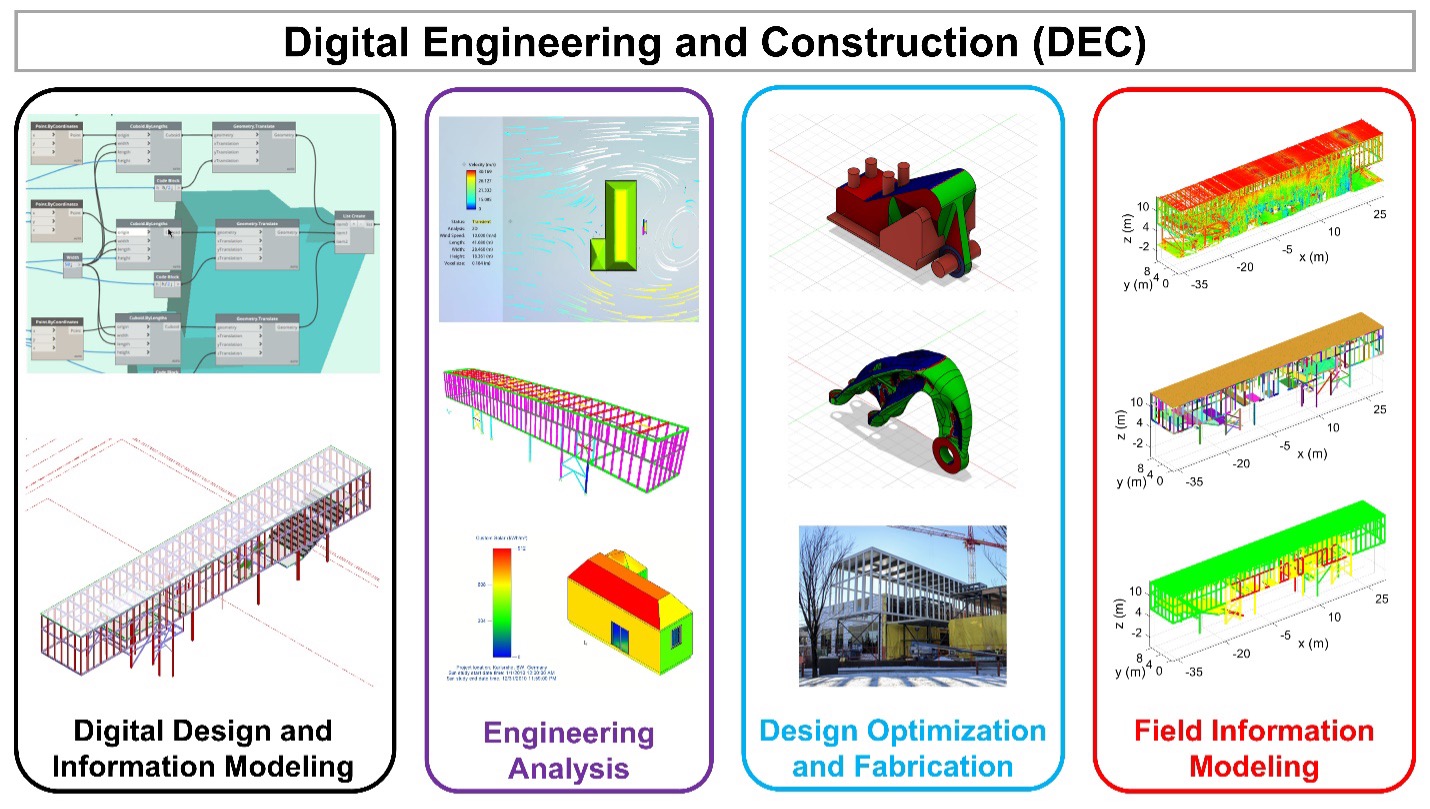Learner Outcomes:
This course is designed to provide the learners with the tools necessary to understand the digital engineering and construction framework, and the cutting-edge technologies used to foster construction automation, along with the consequential challenges, limitations and future progressions. The learners will be able to describe the main digital technologies for the engineering design process throughout the lifecycle of construction projects. They can explain the role of the practical applications of these technologies within the engineering design process of a real project. They are also able to apply some selected basic principles of these technologies in practical settings in the context of lab assignments.
Introduction to Digital Engineering and Construction (DEC):
 Recent advancements in digital and remote sensing technologies in construction engineering and management is paving the path to the conception of industry 4.0 in construction (construction 4.0). A full digitization and automation of the construction industry is projected to produce annual cost savings of around € 1.3 trillion globally compared to current practices according to the most reliable sources (e.g., World Economic forum). The full digitization and automation must start from the early design stages of the project and continue throughout the construction, facility management and operations, and dismantling phases.
Recent advancements in digital and remote sensing technologies in construction engineering and management is paving the path to the conception of industry 4.0 in construction (construction 4.0). A full digitization and automation of the construction industry is projected to produce annual cost savings of around € 1.3 trillion globally compared to current practices according to the most reliable sources (e.g., World Economic forum). The full digitization and automation must start from the early design stages of the project and continue throughout the construction, facility management and operations, and dismantling phases.
The new developments in digital technologies now enable the (i) large scale 3D modeling and visualization, (ii) comprehensive engineering analysis, (iii) merging management principles with the design through 4D and 5D simulation; and (iv) consequential design enhancements and optimizations within the construction engineering design practice. With the growth of information systems in construction, various layers of intelligence can be introduced onto a unified digital model, which can support processes, such as engineering analysis (e.g., solar, wind, and structural), design optimization, clash detection, and simulation. This can foster communication and collaboration between various engineering disciplines, particularly influential in larger-scale mega projects. With the introduction of virtual reality tools, project stakeholders can perform a virtual walk through of the project before construction. Augmented and mix reality can be used to further enhance on-site communication between the construction crew and the digital engineering design team. The virtual, augmented and mixed reality technologies can further mitigate the risk of unsatisfactory construction, saving the time and cost associated with rework or change orders due to misunderstanding of expectations. Moreover, the utilization of robot-aided construction together with additive manufacturing concepts can further help mitigate the risk of information loss between the digital design and the constructed real-world components. Finally, the recent developments in remote sensing and optical metrology, such as laser scanners, smartphones and drones, provide ample opportunities to collect frequent, continuous, and reliable field information, such as 3D point clouds, so as to detect any possible disparities between the built and the design standards and/or requirements early in the project’s lifecycle. The detection of these discrepancies early in the project’s lifecycle, when the degree of influence on the project is higher and cost of influence is lower, can prevent costly and time-consuming rework.
It is, hence, to no surprise that the full utilization of advanced digital engineering and construction practices throughout the lifecycle of construction projects is projected to save € 1.3 trillion globally.
